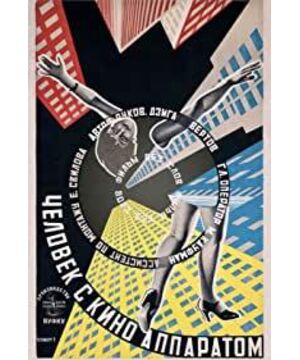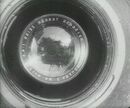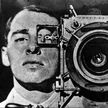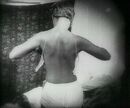Blast! Meta-movie, the viewing dimension has four layers. The first layer is where the photographer shoots the video through the camera, the second layer is the process of another subject shooting the photographer, the third layer is where the audience in the movie watches the footage shot on the second layer in the theater, and the fourth layer is where we Watch the entire video of the process. In the first two layers, the camera and the photographer are calculated as the same viewing subject, and the viewing subject in the latter two layers is the audience. In addition to emphasizing his "cinematic eye theory" through different viewing dimensions, Vertov used the opening and closing of a woman's eyes to cross-edit the opening and closing of the shutters shortly after the beginning of the film, and then used the human eye to superimpose it on the camera lens (this screen video). repeated in many places) to emphasize that the camera should record reality as objectively as the human eye. However, the director believes that the camera lens is more powerful than the human eye, so the camera is like the director's eyes that can be separated from the flesh, tirelessly and greedily observing the movement of people and objects at strange angles or at different speeds. It also achieves different visual effects by rewinding time, combining montage clips, split-screen juxtaposition, and more. The cross-juxtaposition of unrelated things makes them have a similar relationship, such as a manicurist using a nail file to manicure a client, and cutting to the editor using tools to process film; or like a photographer using a camera to record pictures, Machines run, cut to women running textile machines; play the piano elegantly, fold to workers making music with everyday objects such as spoons and bottles, and so on. These all show the director's social purpose. There is a section of the film where people ride in carriages, horses run in front, and suddenly freeze, cut to the still picture of the film in the editor's hand, and then cut to the corresponding film picture that suddenly moves (later emphasizes the freeze of the horse running again. , echoed by the revolving lantern, when the horse ran, not both hooves forward at the same time, but one after the other, the camera recorded the truth that we cannot observe with the naked eye). At this moment, the movie shows its most essential, most authentic and moving power. Coupled with the advancing and rising violin melody, and then the lyrical melody of the next paragraph, I think of how the film has come to the present step by step, and my feelings for her instantly flooded my heart, and tears filled my heart.
View more about Man with a Movie Camera reviews







